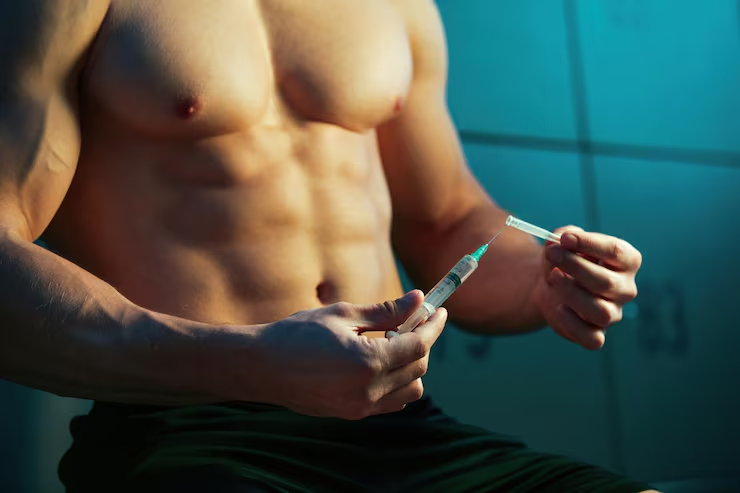Gaining muscle while cutting fat, often referred to as body recomposition, is a goal many fitness enthusiasts and athletes aspire to achieve. Traditionally, cutting phases focus on fat loss, with the risk of some muscle loss. However, with the right strategy, it’s possible to build muscle while simultaneously shedding fat.
This article explores the science behind gaining muscle during a cutting phase, offering actionable steps to optimize your diet, training, and supplementation for maximum results.
Understanding the Science of Body Recomposition
Building muscle and losing fat simultaneously might seem contradictory, as muscle growth typically requires a caloric surplus, while fat loss depends on a caloric deficit. However, under specific conditions, both processes can occur:
- Beginners: Newcomers to weight training can experience rapid muscle growth even in a deficit due to their body’s heightened responsiveness.
- Returning Athletes: Those resuming training after a break often regain muscle quickly, even while cutting.
- Enhanced Recovery: Individuals using anabolic steroids or supplements that promote protein synthesis can achieve muscle growth during fat loss.
Key to this process is creating an anabolic environment through optimized nutrition, training, and hormonal balance.
Steps to Gain Muscle While Cutting
Follow these essential steps to achieve muscle growth and fat loss simultaneously:
1. Dial In Your Nutrition
Nutrition is the cornerstone of body recomposition. To achieve the balance needed to gain muscle while cutting fat, focus on the following:
Caloric Intake:
- Slight Deficit: Aim for a modest caloric deficit of 10-15% below maintenance to promote fat loss without compromising muscle growth.
- Adjust As Needed: Monitor progress and tweak calorie intake to ensure steady fat loss while maintaining energy for muscle-building workouts.
Macronutrient Ratios:
- Protein: Consume 1.2-2.0 grams of protein per pound of body weight daily to support muscle repair and growth.
- Carbohydrates: Provide energy for workouts and recovery. Adjust carb intake based on training intensity, focusing on complex carbs like oats, sweet potatoes, and rice.
- Fats: Essential for hormone production, aim for 20-30% of your daily calories from healthy fats like avocados, nuts, seeds, and olive oil.
Meal Timing:
- Pre-Workout Nutrition: Include a mix of carbs and protein 1-2 hours before training to fuel performance.
- Post-Workout Nutrition: Consume fast-digesting carbs and protein within 30-60 minutes after training to kickstart recovery and muscle growth.
2. Optimize Your Training Program
Training is critical for stimulating muscle growth while in a calorie deficit. Design your program with these principles in mind:
Strength Training:
- Focus on Compound Movements: Exercises like squats, deadlifts, bench presses, and pull-ups target multiple muscle groups and maximize anabolic responses.
- Progressive Overload: Gradually increase the weight, reps, or intensity to continually challenge your muscles.
- Volume and Frequency: Train each muscle group 2-3 times per week with a mix of heavy (4-6 reps) and moderate (8-12 reps) sets.
Cardio:
- Moderate Intensity: Incorporate steady-state cardio 2-3 times per week to aid fat loss without hindering recovery.
- HIIT (High-Intensity Interval Training): Add 1-2 HIIT sessions per week for efficient calorie burning and improved metabolic flexibility.
- Balance With Recovery: Avoid excessive cardio, which can lead to muscle breakdown.
Recovery:
- Prioritize rest days and ensure 7-9 hours of sleep per night to support muscle repair and hormone regulation.
3. Incorporate Supplements
Supplements can enhance your ability to build muscle and lose fat simultaneously. Consider the following:
Protein Powder:
- Convenient for meeting daily protein requirements, especially post-workout.
Creatine Monohydrate:
- Enhances strength, performance, and recovery, even during a calorie deficit.
Branched-Chain Amino Acids (BCAAs):
- Help preserve muscle mass during intense workouts or fasting periods.
Thermogenics:
- Supplements like caffeine or green tea extract can boost metabolism and energy levels.
Multivitamins and Omega-3 Fatty Acids:
- Support overall health and recovery.
4. Use Steroids or Performance Enhancers (Optional)
For advanced users, anabolic steroids or other performance-enhancing drugs (PEDs) can significantly enhance body recomposition. Popular options include:
Anavar (Oxandrolone):
- Preserves lean muscle while promoting fat loss, making it ideal for cutting phases.
Winstrol (Stanozolol):
- Enhances muscle definition and vascularity.
Clenbuterol (not a steroid):
- Boosts metabolic rate and fat burning while preserving muscle mass.
Testosterone Propionate:
- Supports muscle growth and recovery during cutting phases.
Important Note: Steroid use carries risks and should only be undertaken with proper knowledge, medical supervision, and post-cycle therapy (PCT).
5. Monitor Your Progress
Tracking your progress ensures you stay on track and allows for adjustments when necessary:
Body Composition:
- Use tools like body scans, skinfold calipers, or bioelectrical impedance to measure changes in fat and muscle mass.
Performance Metrics:
- Record strength levels and training progress. Improvements in performance indicate successful muscle maintenance or growth.
Adjustments:
- If fat loss stalls, consider a slight calorie reduction or increased cardio.
- If strength declines, assess recovery, nutrition, and training volume.
Common Mistakes to Avoid
Achieving body recomposition is challenging, and avoiding common pitfalls is key:
- Excessive Calorie Deficits: Large deficits can lead to muscle loss and stalled metabolism.
- Overtraining: Balancing strength training and cardio is crucial to prevent burnout.
- Neglecting Protein Intake: Inadequate protein hinders muscle repair and growth.
- Inconsistent Tracking: Accurate monitoring of diet, training, and progress ensures results.
Realistic Expectations
While gaining muscle and losing fat simultaneously is possible, it often occurs at a slower rate compared to focusing on one goal at a time. Patience, consistency, and discipline are essential for long-term success.
Final Thoughts
Gaining muscle while cutting fat is a challenging yet achievable goal with the right strategy. By optimizing your nutrition, training, and recovery, and possibly incorporating supplements or performance enhancers, you can achieve an impressive body recomposition.
Ask yourself: Am I ready to commit to the discipline and precision required for this process? With dedication and the right plan, you can transform your physique while maintaining peak performance.
-
Schoenfeld, B. J., & Aragon, A. A. (2018). How much protein can the body use in a single meal for muscle-building? Implications for daily protein distribution. Journal of the International Society of Sports Nutrition, 15(10). https://jissn.biomedcentral.com/articles/10.1186/s12970-018-0215-1
-
Stokes, T., Hector, A. J., Morton, R. W., McGlory, C., & Phillips, S. M. (2018). Recent perspectives regarding the role of dietary protein for the promotion of muscle hypertrophy with resistance exercise training. Nutrients, 10(2), 180. https://doi.org/10.3390/nu10020180
-
Wilson, J. M., & Wilson, S. M. (2005). Contemporary issues in body recomposition: A sports nutrition and exercise physiology perspective. Sports Nutrition Review Journal, 2(1), 49-55.
-
Murphy, C. H., Hector, A. J., & Phillips, S. M. (2015). Considerations for protein intake in managing weight loss in athletes. European Journal of Sport Science, 15(1), 21-28. https://doi.org/10.1080/17461391.2014.936324
-
American College of Sports Medicine. (2016). ACSM’s Guidelines for Exercise Testing and Prescription (10th ed.). Lippincott Williams & Wilkins.
-
Healthline. (2017). Body recomposition: How to lose fat and gain muscle at the same time. https://www.healthline.com/nutrition/body-recomposition






